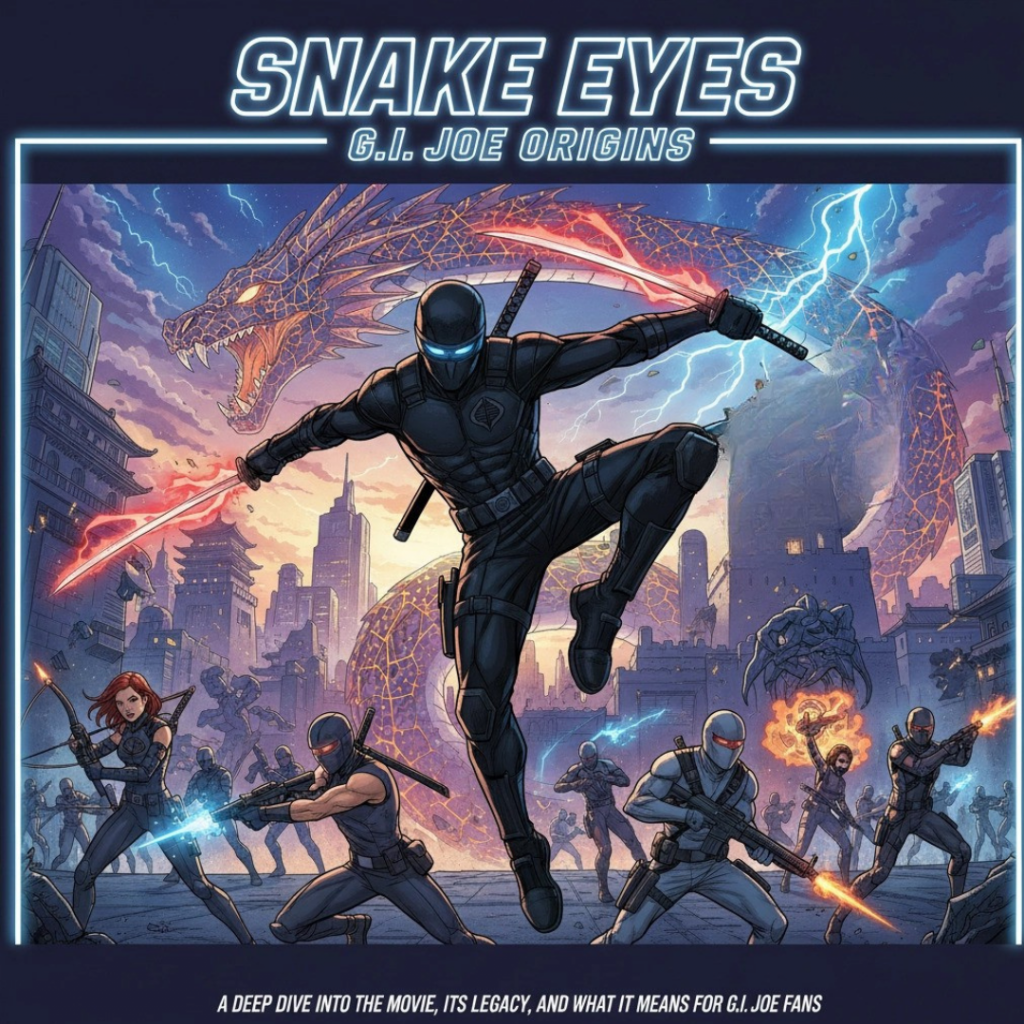
Snake Eyes: G.I. Joe Origins – A Deep Dive into the Movie, Its Legacy, and What It Means for G.I. Joe Fans Let’s talk about Snake Eyes: G.I. Joe Origins. Released in July 2021, this movie tried to do something ambitious: reboot the G.I. Joe franchise while giving us the origin story of its most mysterious character.
Did it work? Well, that’s complicated.
What’s This Movie Actually About?
Snake Eyes follows our protagonist (played by Henry Golding) as he hunts for his father’s killer. Pretty standard revenge plot, right? But here’s where it gets interesting – Snake Eyes gets pulled into the world of the Arashikage ninja clan after saving Tommy, the heir apparent.
The movie takes us from underground fighting rings to ancient Japanese temples. Snake Eyes learns the ways of the ninja while searching for belonging and purpose. Meanwhile, he’s secretly working with the villainous Cobra organization, because apparently revenge makes you do questionable things.
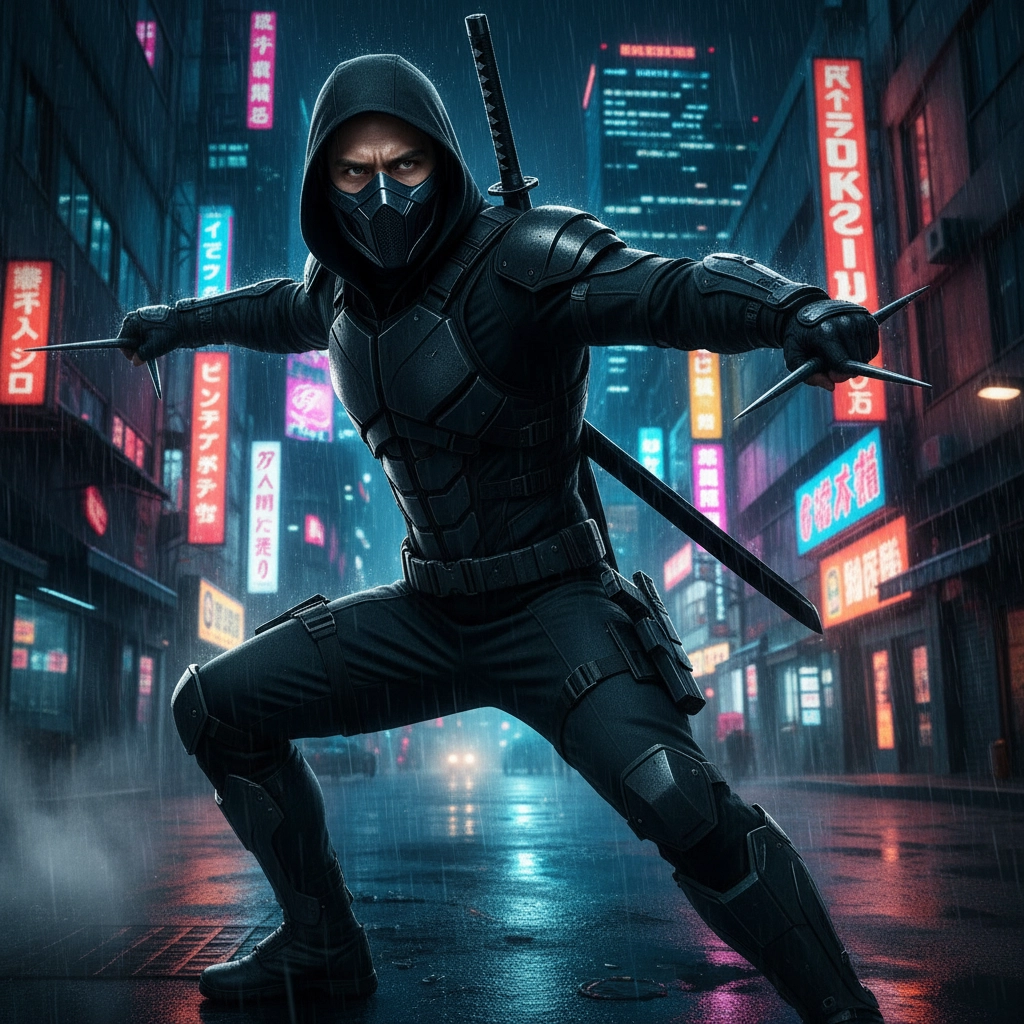
The plot weaves together personal vengeance, ancient ninja traditions, and modern espionage. It’s ambitious, but does it stick the landing? That depends on what you’re expecting from a G.I. Joe movie.
Henry Golding’s Take on Snake Eyes
Here’s the thing about casting Henry Golding as Snake Eyes – it was brilliant and controversial at the same time.
Golding brings charisma and emotional depth to a character who’s traditionally silent. Yes, you read that right. The famously mute Snake Eyes talks throughout this entire movie. For some fans, that was sacrilege. For others, it was necessary character development.
Golding’s performance anchors the film. He makes Snake Eyes sympathetic while showing his darker impulses. The guy can handle action sequences and emotional beats equally well. Plus, his chemistry with Andrew Koji (Tommy/Storm Shadow) gives weight to their eventual friendship-turned-rivalry.
The supporting cast delivers too. Úrsula Corberó brings complexity to The Baroness, while Samara Weaving makes Scarlett feel like a real person instead of just “the G.I. Joe representative.”
Action Choreography That Actually Works
Let’s give credit where it’s due – this movie knows how to film fight scenes.
The action choreography blends modern martial arts with traditional ninja techniques. Director Robert Schwentke clearly studied the John Wick playbook. Long takes, clear spatial awareness, and minimal shaky cam nonsense.
The motorcycle chase through Tokyo streets? Fantastic. The temple infiltration sequence? Visually stunning. The final showdown between Snake Eyes and Tommy? Emotionally satisfying, even if you see it coming from miles away.

The movie excels when it focuses on practical stunts and real locations. The Japanese settings provide gorgeous backdrops for the ninja action. It feels authentic in ways that purely CGI environments never could.
G.I. Joe Connections and Marvel Comic Roots
Now here’s where things get interesting for longtime fans. Is G.I. Joe Marvel? Well, sort of.
The G.I. Joe: A Real American Hero comic series launched at Marvel in 1982. Larry Hama created most of the characters and mythology we associate with modern G.I. Joe. Snake Eyes, Storm Shadow, the Arashikage clan – all Hama creations from those Marvel comics.
This movie draws heavily from Hama’s work, particularly the ninja elements and the complex relationship between Snake Eyes and Storm Shadow. The Arashikage symbol, the family dynamics, even specific character beats – they all trace back to those classic Marvel issues.
But here’s what the movie gets right about the gi joe a real american hero comic legacy: it understands that G.I. Joe works best when it focuses on individual characters and their relationships. The comics succeeded because they made you care about people, not just military hardware.
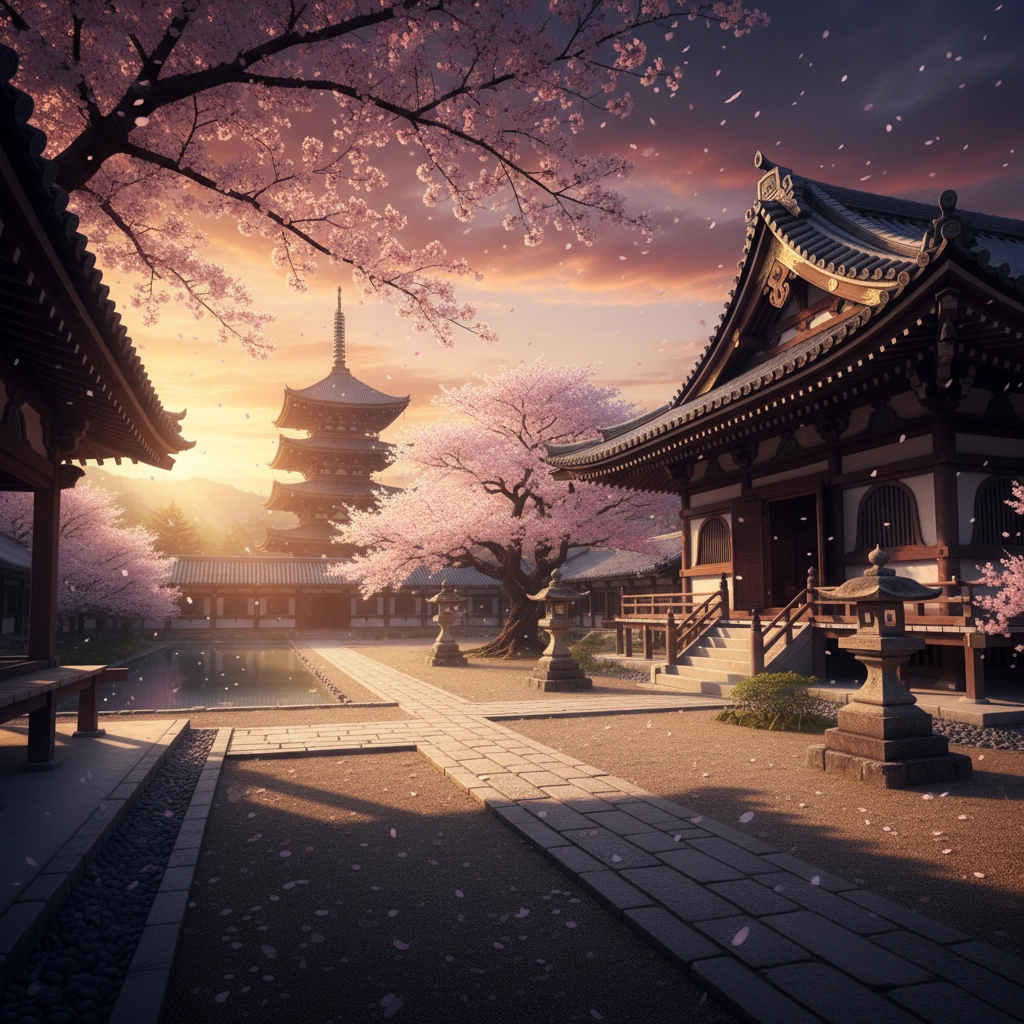
The film also includes subtle nods to the broader G.I. Joe universe. Scarlett’s presence connects to the military side. The Baroness ties into Cobra. Even small details like weapon designs and organizational structures call back to the source material.
Critical Reception: The Good, Bad, and Ugly
Critics were… mixed. And that’s putting it diplomatically.
The movie earned a 5.4/10 on IMDb and similar ratings elsewhere. Professional critics praised the action and Golding’s performance while criticizing the story structure and character development.
Common complaints included:
- Predictable plot twists
- Underdeveloped supporting characters
- Tonal inconsistencies between ninja movie and G.I. Joe property
- Generic villain motivations
But here’s what critics got right: the movie looks great and moves well. The action sequences rival anything in recent martial arts cinema. The production design creates a believable world where ancient traditions meet modern warfare.
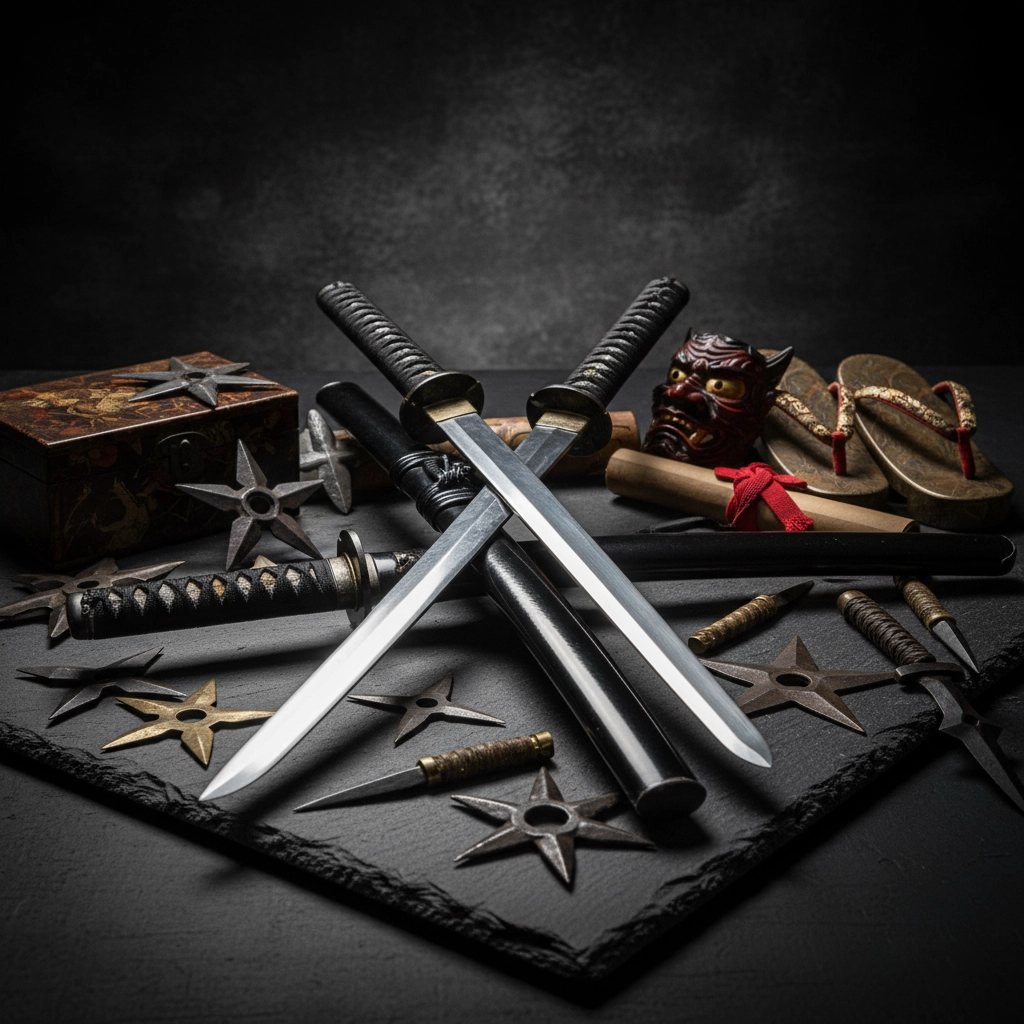
The biggest criticism? Many felt the movie didn’t need to be a G.I. Joe property at all. Strip away the brand elements, and you’ve got a solid ninja revenge flick. Whether that’s a strength or weakness depends on your perspective.
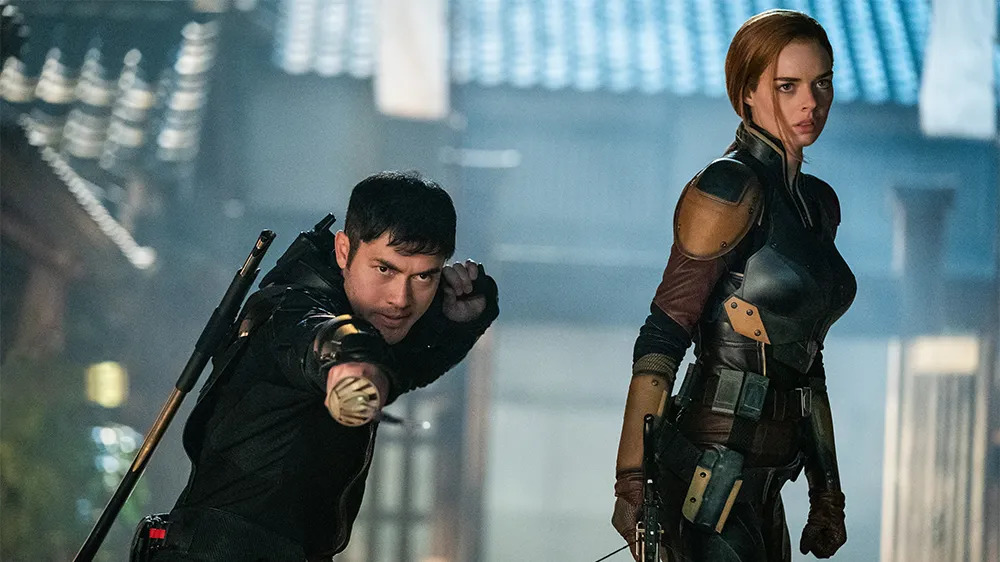
Fan Reception: Divided Loyalties
G.I. Joe fans had… opinions. Strong ones.
Longtime enthusiasts appreciated the focus on Snake Eyes and Storm Shadow’s relationship. The Arashikage clan backstory felt faithful to Larry Hama’s vision. The ninja elements delivered what fans had wanted from previous movies.
But that talking Snake Eyes thing? Still controversial. Many fans argue that Snake Eyes’ mystique comes from his silence. Making him chatty removes what made the character special.
Newcomers to the franchise generally enjoyed the movie more than established fans. Without expectations about character traits or storyline continuity, they could appreciate it as straightforward action entertainment.
The movie also sparked debates about representation and modernization. Some praised diverse casting and updated character backgrounds. Others complained about changes from established canon.
Behind-the-Scenes Trivia and Production Secrets
Want some interesting production details? Here we go.
Henry Golding trained for months in martial arts specifically for this role. He worked with professional stunt coordinators to nail the physicality. The guy put in serious work to make those fight scenes believable.
Much of the movie was filmed in Japan, giving authentic locations for the ninja sequences. The production team worked with Japanese consultants to ensure cultural accuracy in the Arashikage clan scenes.
The costume design deserves special mention. Snake Eyes’ suit evolves throughout the movie, showing his progression from street fighter to trained ninja. It’s subtle visual storytelling that works better than most of the dialogue.
Originally, the script included more connections to previous G.I. Joe movies. Those were removed during rewrites to make this feel like a fresh start. Smart move, considering how those earlier films were received.
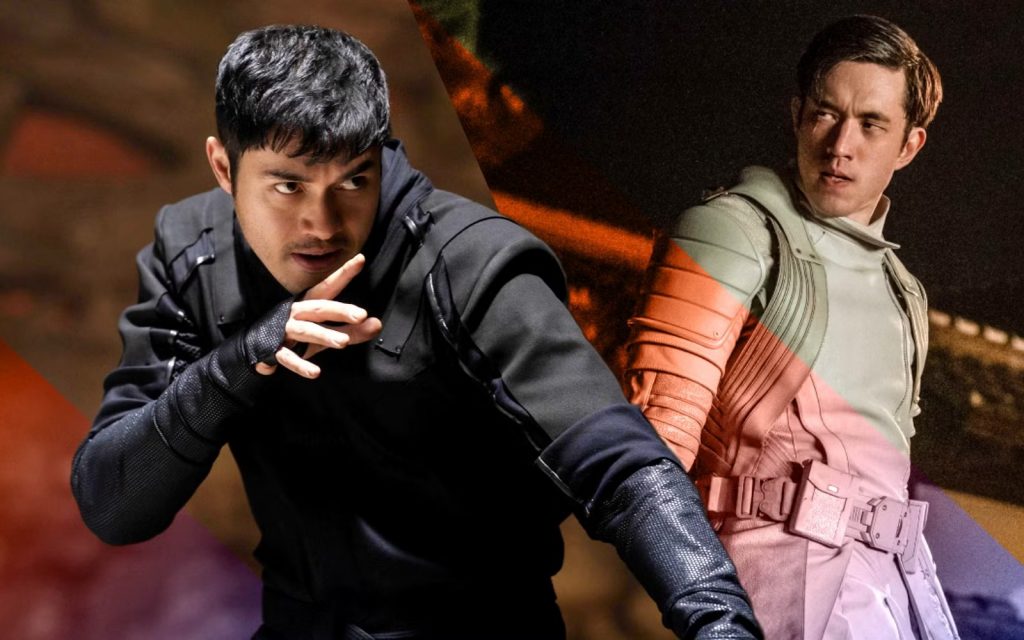
What This Means for the Future of G.I. Joe
Snake Eyes: G.I. Joe Origins was supposed to launch a new cinematic universe. That… didn’t happen.
The movie’s modest box office performance and mixed reception put those plans on hold. No immediate sequels were announced. Other planned G.I. Joe projects went into development limbo.
But here’s the thing – the movie proves there’s still potential in this property. When focused on character relationships and practical action, G.I. Joe can work on screen. The problem isn’t the source material; it’s finding the right approach.
The film’s emphasis on the G.I. Joe: A Real American Hero comic elements shows an understanding of what made the franchise special. Future projects would benefit from mining more of Larry Hama’s character work and relationship dynamics.

Lessons Learned and Moving Forward
So what can we take from Snake Eyes: G.I. Joe Origins?
First, origin stories work when they focus on character development over franchise building. Golding’s performance succeeds because it prioritizes Snake Eyes as a person, not just an action figure.
Second, the action choreography proves G.I. Joe can deliver spectacular sequences when properly executed. The ninja elements add visual flair that distinguishes it from generic military action.
Third, honoring source material matters, but adaptation requires changes. The movie works best when it captures the spirit of the comics while updating elements for modern audiences.
The film isn’t perfect, but it’s far from the disaster some critics claimed. It’s a solid action movie that happens to be saddled with franchise expectations and brand baggage.
The Verdict
Snake Eyes: G.I. Joe Origins represents both the potential and limitations of modern franchise filmmaking. It delivers spectacular action and strong lead performance while struggling with story structure and character development.
For G.I. Joe fans, it offers the best screen version of beloved characters like Snake Eyes and Storm Shadow. The ninja elements feel authentic and exciting. The connection to the gi joe a real american hero comic legacy shows respect for the source material.
For general audiences, it’s an entertaining martial arts flick with gorgeous cinematography and solid action sequences. You don’t need extensive G.I. Joe knowledge to enjoy the ride.
Will we see more G.I. Joe movies like this? Probably not immediately. But Snake Eyes proves the franchise has life left in it when approached with care and respect for what made it special in the first place.
Sometimes that’s enough.
My personal perspective.
But for me especially, it didn’t answer my deepest questions about Snake Eyes. How did Snake Eyes lose his ability to speak? The romance between Scarlet and Snake Eyes didn’t develop, but it made sense since they had barely met in this movie. I believe that, the way the script was written, it was counting on a sequel, but the movie bombed at the theater. Was the poor box-office results due to the pandemic hangover?
I would really like to have a discussion with Larry Hama about this movie!
